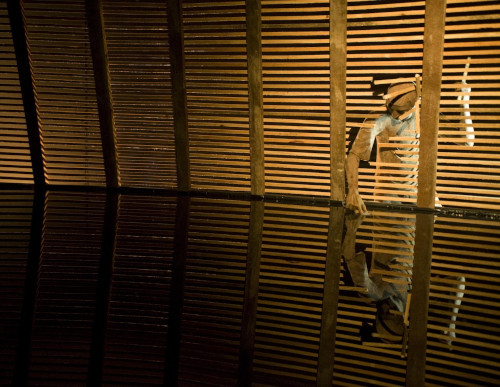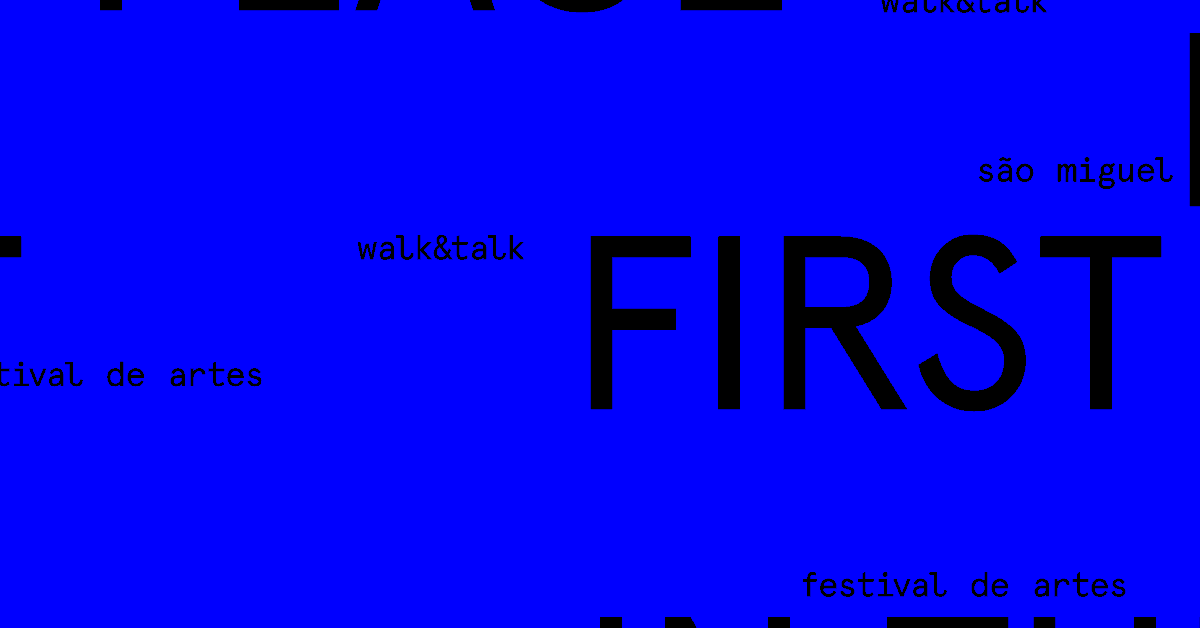This is a sea voyage that is meant to be a tribute to freedom fighters wherever they may be.
One of the obligatory points of my visit to South Africa was a tour in Robben island, I wanted to see the prison where Nelson Mandela, one of the historical leaders of anti-apartheid and one of my idols, was detained for 18 years and I fulfilled this desire, but what I learned on this trip was far beyond my expectations, it was not the cell of the historical leader that moved me the most, contrary to what I imagined, but rather the many faces of the struggle for freedom, some even gone unnoticed, although they have helped to write the history of their country with blood, sweat and tears, almost anonymous heroes who simply did not disappear for the simple reason that there is always someone who remembers them, who keeps alive the flame of their memory and it is about these men who have marked my soul forever and on which I want to speak ...
On arrival, after a pleasant ferry trip, in the port the first thing you see are a series of buses with their respective guide which describes along the way succinctly several striking facts about Robben island. Basically, from the sixteenth century until the mid-twentieth century this territory has always been used to ban criminals, persons or people who in any way represented some kind of danger to the current system.
It was also the place where several people with the leprosy were banished. There was a small colony on the island and the proof of the existence of these unfortunate and ostracized souls is a small cemetery, next to the small church of the good shepherd that in our days celebrates many marriages especially on the 14th of February.
Over the 500-year history of this island, this was the place of oppression and imprisonment of the Khoi people who opposed to colonization, Muslim religious leaders, political prisoners of Namibia and later those who were resistant to the apartheid regime, they all had a common ideal, their craving for freedom of expression, regardless of their ethnicity, religion, political conviction or skin color and this alone is a pretty powerful message.
But the biggest lesson I learned about freedom came before a small, isolated white house where one of South Africa's most "dangerous" men was detained, according to Apartheid, the political dissident Robert Sobukwe. The university professor and founder of the Pan African Congress party, led a nonviolent march on February 28th, 1960 against the so-called "pass law" that forced black citizens to present a passbook that was intended to restrict their movements across the territory, millions adhered to the call that day. However, the worst was yet to come, when protestants drove to the Sharpeville squad, police officers decided to opened fire killing 89 people and wounding 150, this tragic incident would later become known for the Sharpeville massacre.
For the next three years, Robert Sobukwe was "banished" to a remote farm and from 1963 to 1969 and was detained on Robben Island under the so-called Sobukwe clause, which was specially created for him by the Suppression of Communism Act of 1950. Apartheid considered Sobukwe so dangerous but so dangerous that they kept him isolated for several years without any kind of human contact, either from the remaining prisoners on the island, or even from the guards who were forbidden to even greet him. Nobody, but absolutely no one could approach the resident of the T159 house, were not even allowed visits from the family, his isolation was such that Robert Sobukwe lost his ability to express himself orally, as his vocal chords collapsed for lack of use, he even had difficulties in expressing himself when he was interrogated.
Another of the consequences of the inhuman treatment to which he was subjected is that he started talking to plants and lost some of his mental abilities. In 1969 he was released, he was able to return home, but was kept under house arrest for several years until his death in 1977. Apartheid was thus able to break the man who never saw the fruits of his revolt, much less saw the birth of the multiracial nation to which it contributed. I could not stop thinking, after hearing the story, how a single man, a born leader certainly, managed to frighten a political regime in such a way that they decided to break his spirit of struggle by silence.
After the emotional story about the life of this freedom fighter, we visited the quarry where Nelson Mandela and the other apartheid political dissidents were forced to work breaking stone for the various construction and repair works on Robben's prison infrastructures.

The last stop involved a visit by the cell groups where several political dissidents were imprisoned, and where one of the ex-prisoner’s always leads as a guide, mine was Sphiro Msomi. His story with this location began at the age of 16 when he and six other comrades rallying at an ANC demonstration were detained and sent to Robben. The first five months were spent in the solitary confinement of this jail of extreme security and from the six prisoners, only five left alive the hole, the sixth did not withstand the torture sessions inflicted by the security police, in what he called the hell of the "Alcatraz of Africa South".
Daily physical and psychological torture became part of everyday life, as was the case with all detainees. Fear of returning to solitary confinement was a constant and feared reality that almost drove him mad because the most violent forms of torture occurred in these narrow spaces. The only time he felt the first glimmer of hope was the day they appeared before the judge to be tried, sitting in the chairs of the room were some relatives and friends reciting phrases of encouragement and songs of freedom. It was on this day that Sphiro Msomi felt that he gained the strength to survive, because they did not forget them, someone cherish and encouraged them to resist and they started to believe that there was hope.
After the sentence, a normal day on Robben island was to go to the quarry where they were forced to work from 7.30 in the morning until 4 pm, everyone shared a common bucket for their needs that was placed inside the cave and where the key leaders of the jail took the opportunity to talk about democratic concepts and socialism.
The food was rationed and depended on the color of the skin, it is necessary to emphasize that there were not only African prisoners in the island, the detainees included Indians and Muslims. Blacks, as a rule, received less and their rations were the worst. However, there was a feeling of great solidarity among the prisoners and on several occasions, they started hunger strikes with the aim of improving the precarious conditions of life in the prison, such as food and rest time.


Even locked up in their collective cells there was what Msomi called the "University of Robben Island" where the most literate prisoners taught to read and write their less privileged colleagues and discussed the events reported by the world through newspapers smuggled by fellow inmates who worked in the kitchen. At the end of each of these meetings, hymns of liberty were sung, and tribal dances reinforced the feelings of resilience and fraternity among the prisoners.
Another source of hope was the tireless work of the International Red Cross, which not only improved prisoners' health conditions, but also sponsored equipment for prison football teams, for Sphiro and other prisoners this small gesture was extremely important because not only allowed them to exercise, but, above all else, gave them a moment of pure pleasure and delight, which transported them "outside" the prison walls, which made them forget that they were just a number and became human beings playing soccer.
The physical and mental resilience ability that drove him to survive also came from the example of the older prisoners with heavier punishment, such as Nelson Mandela, who were deprived of the most important moments of their lives, the growth of their children, married life, and he was young and single he felt he had to endure, because if they despite all faced the worst of punishments, he too could endure the same martyrdom and succeeded, but them he stressed that not all his friends reached the end of this ordeal, many died because they simply could not take it anymore, not that they were less brave, or weak, life as a black prisoner on Robben Island was extremely hard and left deep wounds that some of them could not overcome.

At the end of his lecture, in front of the improvised old "turf" he asked if there was any doubt or comment we wanted to make and I could not resist, I asked him how someone who was imprisoned and tortured during several years of his life, six, got back to be a guide?
After a little silence, Sphiro Msomi replied slowly that at the outset after releasing all the prisoners there was a great euphoria with a taste for freedom and a lot of political militancy in the ANC, then in the two years that followed after his release in 1996 he was unemployed and although they had invited him to be a guide on the island, initially he refused and lied saying that was working, because he did not conceive the idea of returning to this place of suffering and torture, it was still very painful. The pressure of friends and family were the main reasons why he had to reconsider and accept this new challenge and also weighed the economic stability he could achieve.
Thus, in 2004 he began his activity as an official guide on the island of Robben and recalls that in the first six months as he walked the corridors of his cell and talked about the history of this place he was very stressed, had cold sweats and even thought to give up. Over time he realized that instead of showing only the darkest face of the prison, which does not mean that at some point he intended to bleach the past, he decided to present a more humanistic view of that place and thus pay homage to all those who fought and perished in this place and this brought him some inner peace.
Today, when he walks the corridors, he takes great pride in the work he does and what this place represents for the new South African generations, a place of torture and death yes, but above all a space for reflection on the human capacity to survive, to nourish hope and believe, whether it be by invoking a Christian, or a Muslim God, or pagan gods, but to resist without forgetting.
I left with my heart squeezed by my ignorance about these heroes of freedom and as I passed the gates, watching groups of young students passing by I reflected on whether we learned anything when we visited these places, or others like Auschwitz. Is humanity really capable of evolving?
If we look at the current situation there is a series of armed conflicts where human rights are trampled, international conventions are ignored and how it is possible that in the XXI century there is still human trafficking on a large scale and unfortunately still proliferate without any control despotic leaders who dispose of the lives of their citizens as if they were cattle, trampling their rights, mutilating their way of life and depriving them even of their most basic choices.
How long will we have to wait until mankind understands that freedom and respect for others has no skin color or religion? Well, if there was anything I learned from these freedom heroes, we cannot give up, we have to resist, we do not have to stand around waiting for politicians to act, we must act as a society and not just believe, but be part of that construction that is humanity.












